Lian-Kuan Chen
A Dynamic Model for Frequency Response Optimization in Photovoltaic Visible Light Communication
May 01, 2023Abstract:Photovoltaic (PV) modules are recently employed in photovoltaic visible light communication (PVLC) for simultaneous energy harvesting and visible light communication. A PV-based receiver features large signal output, easy optical alignment, and self-powered operation. However, PV modules usually have a severe bandwidth limitation when used as passive photodetectors. In this paper, we systematically investigate the internal impedance dynamic of PV modules and how that affects their frequency response characteristics under different illuminances. We propose a simplified yet accurate dynamic PV mode AC detection model to capture the frequency response characteristics of a PVLC receiver. The model is validated with the impedance spectroscopy characterization methodologies. Experimental results show that a PV module's internal resistance and capacitance depend on incident illuminance, affecting PV's frequency response. The bandwidth is exacerbated under indoor environments with low illuminance levels due to the increment of internal resistance for PV modules. The RC constant can be reduced for PVLC receivers working near open-circuit voltage conditions by adding a moderate local light to decrease the internal resistance value. For practical implementation, PVLC receivers will employ a load for data recovery. We show that adjusting the forward bias conditions can simultaneously reduce the resistance and capacitance values. With the optimization of equivalent trans-impedance, the data rate of a Cadmium telluride (CdTe) PV module achieves a 3.8 times enhancement under 200 lux. We also demonstrate that the BER of a 5-Mbit/s eight-level pulse amplitude modulation (PAM8) signal can be reduced from 9.8*10-2 to 1.4*10-3 by maximizing the transimpedance gain-bandwidth product.
Real-Time Wave Mitigation for Water-Air OWC Systems Via Beam Tracking
Oct 16, 2021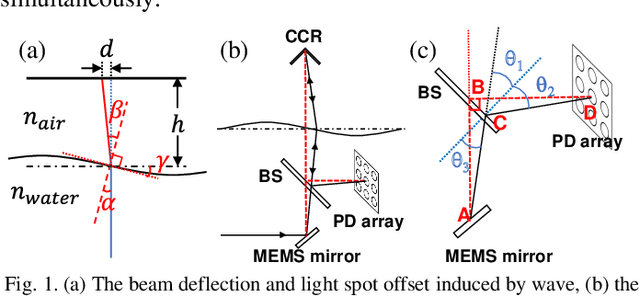
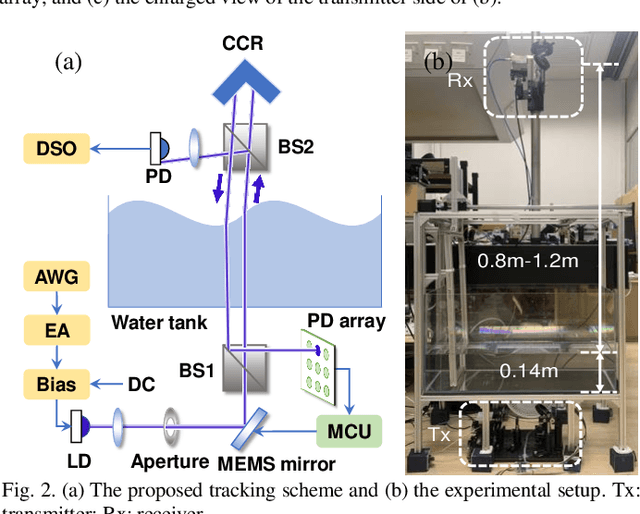

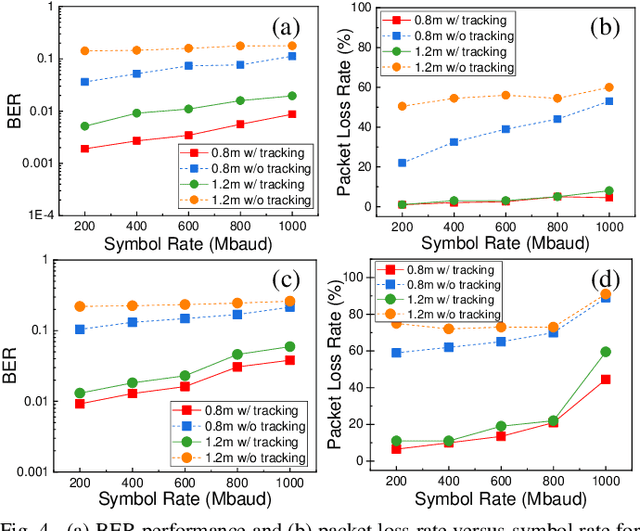
Abstract:In a water-air optical wireless communication (OWC) channel, dynamic ocean waves may significantly deflect the light beam from its original direction, thus deteriorating the communication performance. In this letter, a beam tracking system to mitigate wave-induced communication degradation is experimentally demonstrated. By employing the beam tracking on the PAM6 system, a maximum of 486% improvement (from 140 Mb/s to 820 Mb/s) in throughput is realized at a 1.2-m air distance for an average wave slope changing rate of 0.34 rad/s. For PAM4 signals, the packet loss rate reduces significantly from 75% to 11%, and a maximum throughput of 1.25 Gb/s is achieved.
On the Nonlinear Distortion Characterization in Photovoltaic Modules for Visible Light Communication
Oct 14, 2021

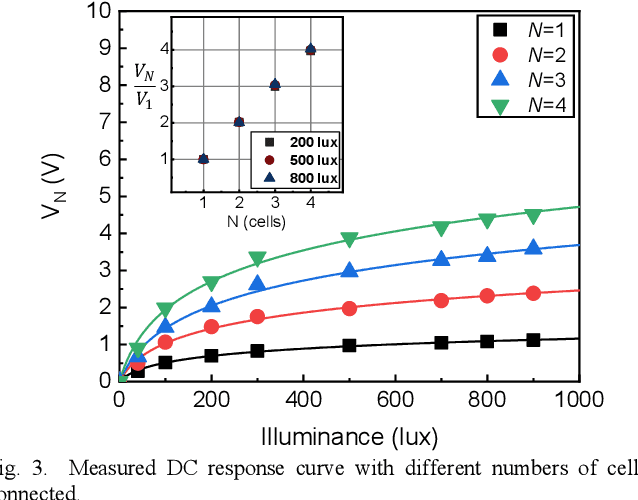
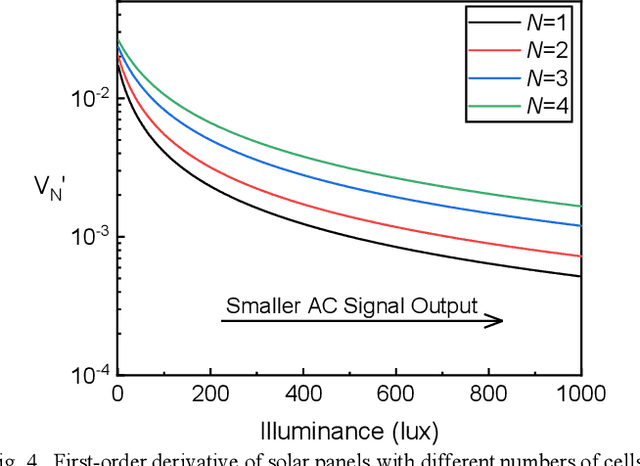
Abstract:Photovoltaic (PV) modules have been employed in visible light communication (VLC) for simultaneous energy harvesting and data reception. A PV-based receiver features easy optical alignment and self-powered operation. It is commonly assumed that PV modules in VLC have a linear optical-electrical response, which is generally true under high illumination levels. This paper will illustrate the exacerbated PV's nonlinear distortion when under typical indoor illumination. The nonlinearity of a PV module for different numbers of PV cells is also characterized. We investigated the transmission performance of a 1-Mbit/s PAM4 signal under different illuminance. Experimental results show that the bit-error rate (BER) first decreases and then increases with the increasing illuminance. Thus, an optimal illuminance to minimize BER exists. In addition, we demonstrated two distortion mitigation methods, namely localized distortion compensation lighting and post-distortion compensation. BER reduction from 3.2x10-1 to 2.6x10-3 and 2.8x10-2 to 1.5x10-2 are achieved with the two respective schemes.
 Add to Chrome
Add to Chrome Add to Firefox
Add to Firefox Add to Edge
Add to Edge